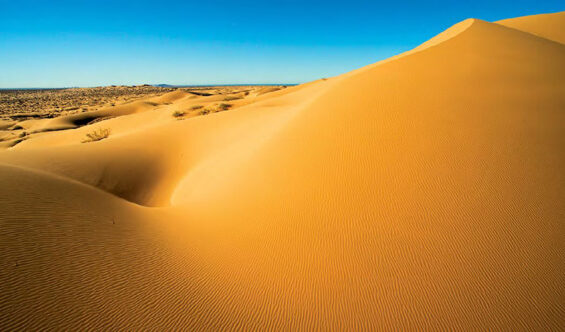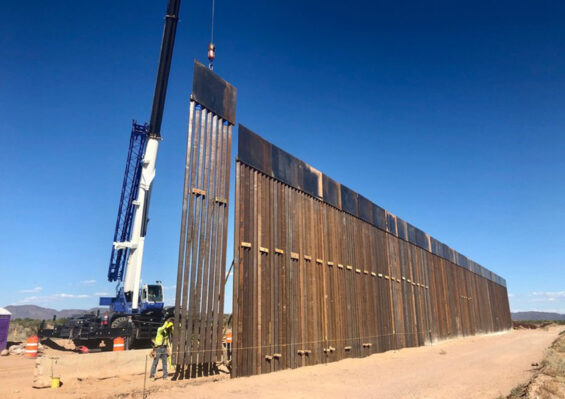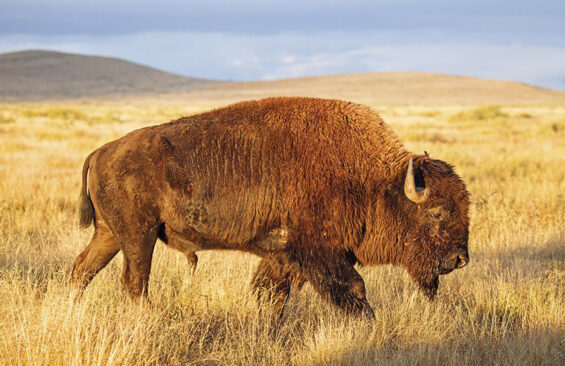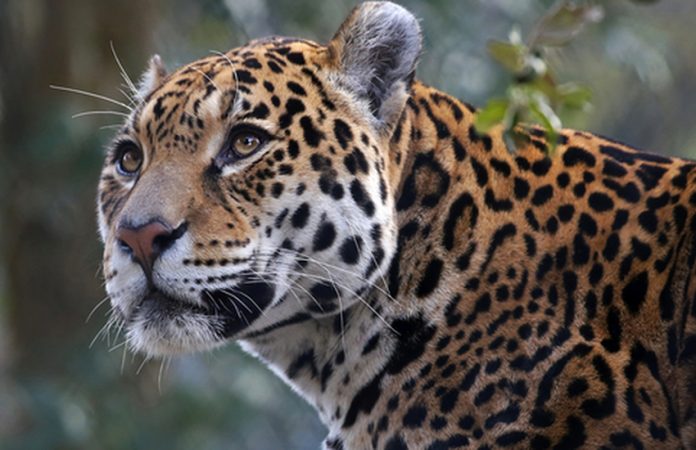The UNESCO World Heritage Committee has asked the United States to stop building along the border wall due to its negative impacts on the biodiversity of surrounding land.
In a statement released on July 23, UNESCO urged the U.S. not merely to swiftly halt construction of the border wall, citing the potential impact on a 2,700-square-mile World Heritage site in Mexico, but to radically restore ecologically sensitive land in both the U.S. and Mexico that has been fragmented by previous building work.
The resolution follows a 2017 petition made by a number of conservation groups, including the Center for Biological Diversity, which sought to put the adjacent 2,700-square-mile World Heritage site El Pinacate y Gran Desierto de Altar — located in the state of Sonora in Mexico — on UNESCO’s In Danger list, which means that the site is in danger of losing its World Heritage status.
The Tohono O’odham Nation of Sonora, who have historically inhabited El Pinacate y Gran Desierto de Altar as well as swaths of the Sonoran Desert in both the U.S. and Mexico, have also called for the restoration of ecosystems in the area surrounding the border wall. The tribal nation’s lands begin south of Casa Grande, Arizona, and include parts of Pinal, Pima and Maricopa counties in that state before continuing south into Mexico.
El Pinacate y Gran Desierto de Altar was designated as a UNESCO Biosphere Reserve in 2013 due to the region’s extensive biodiversity.

These lands — which include the second-largest designation of tribal land in the United States and the home of sacred sites used for ceremonial purposes — were ruptured when construction of the wall began. Members of the tribe living across the border in Mexico have found themselves increasingly isolated from the majority of the tribe in Arizona since the 62-mile boundary wall was constructed.
A mixture of desert, ocean and volcanic ecosystems, the biosphere is home to a variety of flora and fauna, including the endemic cholla cactus, which does not grow anywhere else in the world.
Social and political difficulties caused by the border wall notwithstanding, if construction were allowed to continue, it would cut through this reserve, likely causing damage to the ecology of the area.
“Already the border wall has had an immensely negative impact on wildlife on both sides of the border,” says Alex Olivera of the Center for Biological Diversity. “The wildlife corridors in this area have been around for centuries, yet the construction of the border wall has severed and fragmented these crucial habitats.”
Before former president Donald Trump’s vision of a wall stretching the full 1,954 miles between the Gulf of Mexico and the Pacific was even fully realized, wildlife conservationists lobbied for a halt to construction, citing the risk to species survival that would be caused by isolating breeding populations. President Joe Biden, upon taking office, paused its construction, but by then, the Trump administration had already managed to construct nearly all of the planned barrier in southern Arizona.
For Mike Alcalde, documentary filmmaker at México Natural, UNESCO’s backing of the conservation efforts in this area could not, therefore, be more propitiously timed.

“It is not enough to simply leave the border area to become a wasteland in the aftermath of the damage already done,” he remarks. “Biden’s executive order pausing border wall construction was a significant first step, but now both the Biden and López Obrador administrations must collaborate to reverse the damage done by the construction of the wall on both sides of the border.”
For the endangered and elusive North American jaguar, the border wall means the destruction of migration routes and the protected terrain in which they have been making a gradual comeback after being hunted to near extinction in the 1960s. The most recent segments to undergo construction have been in the remote, mountainous terrain through which the jaguars pass to breed.
The interruption of territory critical to their movements has resulted in a significant decline in sightings since 2016.
As the effects of climate change and human interference send animal population numbers across the globe into freefall, it is imperative that areas of natural biodiversity are not simply preserved but encouraged to grow. It is the only way the likes of the North American jaguar, the Mexican gray wolf, and the Sonoran pronghorn hope to regain a footing in population numbers.
It can be done: the Janos Biosphere Reserve in Janos, Chihuahua, is a prairie ecosystem well-known for its protection of species such as the pronghorn and for the successful reintroduction of the American bison into its grasslands.
In a little over a decade, the herd of bison there has grown from 23 individuals to nearly 150, prompting the introduction of a second herd in Coahuila in collaboration with the Natural Protected Areas Commission (Conanp).

It is also vital, however, that in working to restore the ecosystems around the border wall, the governments of Mexico and the United State collaborate with existing borderland communities.
“No one is saying that the border area is not a complicated space,” continues Alcalde, “which is exactly why in order to really move forward, policy making needs to be made with cross-governmental agreement as well as strongly featuring the voices of the region’s indigenous communities, biologists and conservationists. Any other choice condemns it to being a dead zone.”
The U.S.-Mexico border continues to be one of the world’s most contentious regions, Alcalde says, but one that is almost always seen through the prism of human movement. The UNESCO World Heritage intervention reminds us that the area has a great deal more in evidence, and always has, being rich in and harboring unique levels of biodiversity.
Whatever the frontier is, it is definitely so much more than just a border.
Shannon Collins is an environment correspondent at Ninth Wave Global, an environmental organization and think tank. She writes from Campeche.
